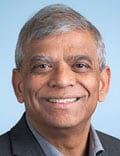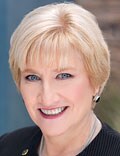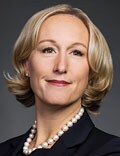Oncologists predicted a grim future for independent cancer practices as the COVID-19 pandemic swept across America: there would be steep declines in patient visits, treatment and screening would be the last straw for many already struggling centers, and they would have to shut.
But what actually happened? Medscape Medical News talked to oncologists at independent practices on how they weathered the storm and found that, although they mostly survived, the pandemic has left them fearful about a looming crisis.
The grim predictions were made in an October 2020 JAMA Oncology viewpoint article. Zachary Frosch, MD, and colleagues from the University of Pennsylvania, in Philadelphia, Pennsylvania, argued that the pandemic exposed the fragility of US cancer care.
About half of all US oncology practices are independent, they noted. These mostly physician-owned practices, which were sometimes the only cancer care providers in their communities, had already been struggling financially before the pandemic.
Indeed, they have faced years of declining reimbursement and growing expenses that led hundreds of offices to shutter between 2008 and early 2020, according to an April 2020 report from the Community Oncology Alliance (COA).
But the pandemic added extra pressure on an already fraught situation. As COVID-19 spread across the nation, guidelines recommended careful consideration or delay of cancer treatment, and this drastically reduced outpatient cancer visits and chemotherapy administration.
This is “slashing revenue for oncology practices,” the viewpoint authors wrote, warning that these extra financial pressures are placing some independent practices “on the verge of collapse.”
Although this prediction of collapse appears to have been borne out, to some extent, for physician practices in general, it appears that oncology practices have bucked the trend.
A 2020 survey from the Physicians Foundation reported that of an estimated 100,000 independent practices in the United States, about 13% closed and that 6% plan to close in the next 12 months because of COVID. The Physicians Foundation noted that the majority who closed their doors are “surgical, diagnostic, internal medicine or other specialists,” though it did not provide a more granular breakdown by practice type.
In contrast, independent community oncology practices have largely survived the pandemic.
Although COA has not collected formal data yet, Ted Okon, MBA, executive director of the organization, told Medscape Medical News that “while there may be a few exceptions, we have heard of no independent community oncology practices closing because of, or during, the pandemic. In fact, all the practices we regularly engage with are open and doing well right now.”
David Penberthy, MD, president-elect of the Association of Community Cancer Centers, has come to a similar conclusion.
“In my conversations with colleagues, I’ve found that many independent cancer practices experienced a severe financial impact from COVID-19, and my experience was no different,” said Penberthy, medical director of radiation oncology at Southside Regional Medical Center, in Petersburg, Virginia. “But I also saw community oncology remain resilient and rise to the challenges in big way, continuing to deliver cancer care during the pandemic.”
So how did independent cancer centers survive the pandemic?
Keeping Their Doors Open
Kashyap Patel, MD, chief executive officer of Carolina Blood and Cancer Care in South Carolina and president of COA, knew his small oncology practice needed a plan, and fast.
He supervises five doctors, three midlevel practitioners, and 23 staff in two offices.

Dr Kashyap Patel
Patel knew his patients had no other options for their cancer care, especially those living in the underserved rural belt that sweeps across a 100-mile radius southeast of the practice.
“We are the only practice that provides care for these patients, and I worried about what would happen to them if we closed,” he said.
He made a decision not to turn anyone away. “We see every patient who walks through our doors, whether they can pay or not, and I wasn’t going to leave anyone without care during the pandemic,” he commented.
Funds provided through the Coronavirus Aid, Relief and Economic Security (CARES) Act were a lifeline for Patel’s practice. The Paycheck Protection Program (PPP) allocated almost $68 of $520 billion to healthcare professionals in the United States, and the Provider Relief fund (PRF) provided another $178 billion. The Centers for Medicare & Medicaid Services (CMS) offered emergency relief for physicians treating Medicare patients, sending practices an advance on these payments in 2020 and waiving the automatic yearly 2% reduction in Medicare payments through the end of 2021.
In April 2020, Patel received a little over $330,000 through the PPP and $1 million in advance Medicare payments. Like his colleagues in community oncology, he used these funds to cover COVID-related office expenses and to keep his staff employed, even offering them a 10% to 15% pay bump between March and September 2020, owing to the new risks of treating patients.
To make his office COVID-ready, Patel latched onto the fast-evolving guidelines from the Centers for Disease Control and Prevention and established protocols to stagger patient visits, check symptoms and temperatures, disinfect surfaces, and reconfigure chairs to keep patients at a distance.
He also decided to temporarily close his office in Lancaster, a more rural area about 40 miles south of Charlotte, North Caroline, and shift these patients to Rock Hill. Concentrating operations at one location allowed some staff to stay home in case anyone got sick.
“But by expanding our hours from 5:00 PM to 8:00 PM, virtually every patient on chemotherapy got their treatment when they needed it,” said Patel.
Despite these efforts, the practice did experience a dip in revenue, largely from a 10% decline in new patient consults and a 20% decline in follow-up visits early in the pandemic.

Dr Barbara McAneny
Another practice owner tells a similar story. Barbara L. McAneny, MD, chief executive of New Mexico Oncology Hematology Consultants, found the federal aid kept her practice afloat, helping cover staff salaries plus a $3 per hour raise. It also helped to cover the restructuring of her Albuquerque and Gallup offices for COVID and the lost revenue from a 20% drop in new patients.
But the pandemic presented other challenges for her patients. The novel virus devasted the Navajo Nation in Gallup, and the city closed because of the high infection rate. Essential workers needed a letter to enter.
“We had to take extraordinary measures to help our patients in Gallup,” said McAneny, who runs a foundation that supplies nonmedical essentials — food, childcare, even refrigerator repairs — to her patients who have the least access. “In normal times, many of our patients in the Navajo Nation don’t have running water. During the pandemic, the needs of this community escalated, and we worried that the increased demand would sink us.”
The CARES Act funds and an advance on Medicare payments allowed McAneny and her colleagues to cover the necessities — salaries and COVID-related office changes — and bring hundreds of bags of food to patients in Gallup.
“We spent all of our COVID loan money on these things and still took a hit financially, but we kept our doors open for our patients,” McAneny said.
Revenue Boost From Telemedicine
Aside from government loans, telemedicine also provided a revenue boost for some independent practices. With CMS expanding telemedicine benefits in March 2020, community oncology practices had a new avenue to see patients and get paid.
Texas Oncology — the largest cancer practice in the country, with 220 locations spanning the state and southeastern Oklahoma — quickly developed a telemedicine infrastructure in March 2020.

Dr Debra Patt
“We’ve done 220,000 virtual visits as of the end of March 2021,” said Debra Patt, MD, PhD, MBA, executive vice president of Texas Oncology. “I expected to encounter big ebbs and flows in telemedicine use over the past year, but throughout the pandemic we’ve consistently seen 10% of new cancer patients and 15% of established patients viatelemedicine.”
Virtual visits allowed Patt to monitor patients who were taking oral medications and to manage drug side effects while simultaneously freeing up office space for those requiring chemotherapy infusions, blood draws, IV fluids, or physical exams.
Even before the pandemic, Tennessee Oncology had a telemedicine pilot in place. With patient volumes sinking by 40% in April 2020 as a result of lockdown restrictions, the practice used this infrastructure to continue delivering oral cancer drugs to patients and to accelerate clinical trial screenings for patients in remote areas.
“Instead of having our rural patients drive hours to Nashville for a consultation, we did screenings via telemedicine and saw record clinical trial accruals in our phase 1 trials,” said Natalie Dickson, MD,president and chief medical officer of the 34-office practice.
But telemedicine proved less useful for others. Without smartphones or broadband service, virtual visits were impossible for McAneny’s patients in the Navajo Nation. Even for those equipped with necessary tools, using the technology posed a challenge for some.
“We had some physicians spending 15 to 20 minutes with patients explaining how to turn on their video,” said Kimberly McCurry, director of operations–Northern Division, at California Cancer Associates for Research and Excellence (cCARE) in Fresno.
Outside of federal support and telemedicine — the main avenues for steadying patient volumes and revenue — individual practices found a few other factors helpful.
With primary care offices closing in Augusta, patients began coming to see Miriam Atkins, MD, for their non-oncology needs, including refills for high blood pressure and diabetes medications. “We had to stand in as primary care providers for some of our patients, otherwise they would have been out of luck,” said Atkins, a medical oncologist at Augusta Oncology and vice president of COA.
Having access to PET and CT imaging at cCARE made cancer screenings possible and meant the practice did not see a decline in new patients. “We are very fortunate to have machines to continue cancer screenings,” McCurry said.
Along with telemedicine and federal funds, the partners at Texas Oncology decided to take a salary cut to free up additional funds to keep staff on payroll.
A Few Closures
But even with these changes, a few closures did occur.
Early in the pandemic, Texas Oncology had to shutter five satellite offices out of its 220 locations. “We just could not sustain staffing at those offices,” Patt said.
Fortunately, according to COA, most closures were only temporary. After closing one of his 10 offices during the first COVID surge in March 2020, James Perry, MD, an oncologist at Alliance Cancer Specialist in Pennsylvania, reopened it a few months later. Patel reopened his Lancaster office in July 2020.
Cancer hospitals largely stayed afloat as well, with one exception. In late March 2021, Cancer Treatment Centers for America (CTCA) closed its Tulsa hospital, and Temple University Hospital acquired CTCA’s Philadelphia hospital, representing two of CTCA’s five major centers.
According to a spokesperson for CTCA, market trends in Philadelphia and Tulsa created “insurmountable insurance limitations.” Although CTCA did not provide further detail, a report in The Cancer Letter revealed that the insurmountable insurance limitations in Tulsa may refer to contract struggles with Blue Cross and Blue Shield of Oklahoma, which is currently in a negotiation battle with Oklahoma University Health Stephenson Cancer Center.
Another Crisis Brewing
Although community oncology practices have largely weathered the pandemic, not every practice has fully recovered its prepandemic patient volume.
Patt, who shared updated, unpublished data from Avalere Health, highlighted that screenings and patient visits through November 2020 recovered to a degree but remained lower overall than 2019 — 28% for screenings and 40% for visits.
But some are seeing patient volumes return.McCurry said prepandemic volumes bounced back at cCARE in October, and Patel saw his practice’s normal patient flow resume in early 2021.
William Pierce, MD, PhD, even saw an increase in patient volume along with a 6% boost in revenue in 2020 compared to 2019. Pierce, an oncologist at Oregon Oncology Specialists in Salem, believes the growing expense of oncology treatments as well as the pandemic’s lightter footprint in Oregon might explain these increases.
But a year of delayed screenings appears to be creating a different problem: a wave of new, more advanced cancer diagnoses. A recent survey, conducted in early 2021 by the American Society for Radiation Oncology, found that two thirds of physicians reported new patients coming in with more severe diseasecompared to before the pandemic.
“Anecdotally, we are seeing cancer patients presenting with more advanced cancers that require more substantial treatment cancers,” said Patt. “The tragedy will be in years to come when the full ramifications of this backlog in cancer screenings manifest.”
An analysis from the National Cancer Institute suggests that these pandemic-related delays in cancer diagnoses may lead to almost 10,000 excess deaths over the next decade from breast and colorectal cancer alone. TheBritish National Health Service had its own bleak forecast: A 5% to 16% increase in cancer patients dying prematurely from lung, breast, colon and esophageal cancer over the next 5 years because of delays in screening.
The psychological fallout from a surge of more advanced diagnoses will likely take a toll on patients, families and providers, Patel said. In particular, there is one patient that he cannot get out of his mind.
Yvette Lowery, now 59, had remained vigilant about breast screenings since she could get them. In April 2020, she noticed a lump in her breast, but was out of luck: She could not book an appointment until October. By the time she got a mammogram, she had stage II breast cancer and needed intense treatment: a double mastectomy followed by chemotherapy.
“If Yvette had access to screening on time, she may have been diagnosed at an early stage and required a much less expensive and intensive treatment, possibly no chemotherapy,” Patel said.
Instead, after radical surgery, Lowery had to see Patel every week, sometimes twice a week, for almost 6 months and will continue to need frequent imaging and blood work.
But Lowery’s experience, Patel said, likely reflects the tip of the iceberg, and he is bracing himself for a wave of more advanced cancers to come.
“Developing bonds with patients, becoming part of their ecosystem over years, and seeing some die takes an emotional toll as an oncologist and as a human being,” he said. “I am holding my breath thinking about the ongoing challenges for cancer care in the aftermath of COVID.”
For more news, follow Medscape on Facebook, Twitter, Instagram, and YouTube.
Source: Read Full Article